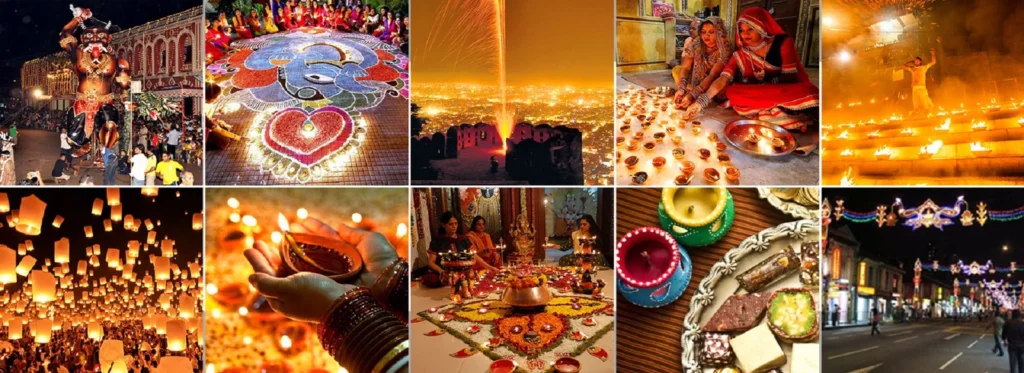Lifestyle in India, the land of diversity, is not only famous for its rich culture, heritage, and traditions but also for its dynamic lifestyle. With its vast geography, multi-religious society, and unique traditions, the lifestyle in India represents a blend of old-world values and modern aspirations. From the bustling metropolitan cities to the peaceful villages, every corner of India reflects a unique way of living. In this blog, we will explore the various aspects of Indian lifestyle — culture, family, food, clothing, festivals, health, work, and the changing face of modern India.

Table of Contents
1. The Cultural Fabric of Indian Lifestyle
India is home to multiple languages, religions, and traditions, all of which shape the daily lives of its people. Respect for elders, strong family bonds, and a sense of community are some of the values deeply ingrained in Indian culture. Spirituality plays an important role, whether through yoga, meditation, or daily prayers. At the same time, younger generations are embracing modern global values, making India a fascinating mix of tradition and modernity.
2. Family Life: The Core of Indian Society
Family is at the heart of Indian lifestyle. Joint families, though less common now, still influence values and practices. In villages and small towns, families often live together under one roof, sharing responsibilities and supporting each other. In urban areas, nuclear families are more common, but the bond with extended family remains strong. Respect for parents, care for grandparents, and guidance from elders form the foundation of Indian social life.
3. Food: A Journey of Flavors
Indian cuisine is a vital part of lifestyle. Food in India is not just about taste; it is also about tradition, culture, and health. Each region has its unique dishes — spicy curries of the south, butter-rich meals of the north, fish-based cuisine of the east, and vegetarian delicacies of the west. Street food, like pani puri, samosa, and vada pav, adds vibrancy to Indian cities.
Food habits also reflect India’s diversity:
- Vegetarianism is common due to religious beliefs in Hinduism, Jainism, and Buddhism.
- Spices and herbs like turmeric, cumin, and cardamom are not only for flavor but also for health.
- Traditional meals are often eaten sitting on the floor, symbolizing humility and connection with food.
4. Clothing: A Fusion of Tradition and Lifestyle in India
Clothing in India reflects its cultural richness. Traditional attire like sarees, salwar kameez, kurta-pajama, and dhoti are worn with pride. During festivals and weddings, people dress in vibrant, embroidered outfits, often paired with jewelry. At the same time, western clothing is widely popular among the youth. Jeans, shirts, dresses, and formal wear have become part of everyday life in urban areas. This coexistence of traditional and modern attire defines India’s unique fashion lifestyle.
5. Festivals: The Heartbeat of Lifestyle in India
Festivals bring people together in India and are celebrated with great joy. They represent India’s diversity:
- Diwali (festival of lights)
- Holi (festival of colors)
- Eid (festival of sacrifice)
- Christmas (celebration of the birth of Christ)
- Durga Puja, Baisakhi, Onam, Pongal and many others
Each festival is marked with rituals, food, decorations, and gatherings. These celebrations strengthen community bonds and add color to everyday life.
6. Work and Career Lifestyle
The work culture in India varies between urban and rural areas. In cities, people work in offices, IT companies, startups, and industries. The growing corporate culture has introduced concepts like work-from-home, flexible hours, and career-oriented lifestyles. In villages, agriculture remains the primary source of livelihood, with farmers working hard in the fields.
Education plays a central role in shaping careers. Parents often emphasize academic success as the key to a better lifestyle. With globalization, more Indians are pursuing careers abroad, while foreign companies are setting up bases in India, creating a balance between local traditions and global aspirations.
7. Health and Wellness
Traditionally, India has always valued holistic health practices. Yoga, Ayurveda, and meditation have been part of daily routines for centuries. Today, these practices are gaining worldwide recognition. In modern cities, gyms, fitness studios, and wellness centers are popular among the youth. Diet-conscious lifestyles, organic foods, and mental health awareness are also rising trends. However, challenges like pollution, stress, and lifestyle diseases such as diabetes and hypertension are concerns that Indians are learning to manage.
8. Entertainment and Leisure
Entertainment is an essential part of Indian lifestyle. Bollywood movies, regional films, and music shape the cultural imagination of millions. Cricket is more than just a sport — it is a passion that unites the nation. Social media platforms, online streaming, and gaming are gaining popularity among the youth. At the same time, traditional art forms like classical dance (Bharatanatyam, Kathak), music (Carnatic, Hindustani), and theater remain important to cultural life.
9. Lifestyle in Indian Villages vs. Cities
- Village Lifestyle: Simple, close to nature, agriculture-based, with strong community bonds. People rise early, live with fewer modern facilities, and lead healthier physical lives.
- City Lifestyle: Fast-paced, modern, and competitive. Cities provide better education, healthcare, and career opportunities but often come with stress and less time for family.
This contrast reflects India’s diversity, yet both lifestyles coexist harmoniously.
10. Modern Shifts in Indian Lifestyle
India is rapidly changing. Urbanization, globalization, and digital growth have transformed the way people live. Online shopping, digital payments, and social media have become part of daily routines. Young Indians balance traditional values with modern ambitions — celebrating festivals while also enjoying global trends like fast fashion, international cuisines, and travel.
Sustainability is also becoming important, with eco-friendly products, organic farming, and minimalistic lifestyles gaining popularity among the environmentally conscious youth.
11. Travel and Leisure Lifestyle
Traveling is a growing passion among Indians. Domestic tourism, from the beaches of Goa to the mountains of Himachal and the backwaters of Kerala, is popular. International travel has also increased as Indians seek new experiences. Adventure tourism, wellness retreats, and cultural tours are becoming a part of the modern Indian lifestyle.
12. Conclusion: The Beauty of Indian Lifestyle
The lifestyle of India is like a colorful tapestry woven with traditions, values, and modern dreams. It is a land where ancient yoga coexists with modern gyms, where sarees and jeans share the same wardrobe, and where families pray together while also binge-watching movies online.
The beauty of the Indian lifestyle lies in its ability to embrace change while holding onto its roots. It teaches us balance, resilience, and the art of living with joy. Whether in the simplicity of a village or the glamour of a city, India’s lifestyle continues to inspire the world with its diversity, vibrancy, and spirit of togetherness.
